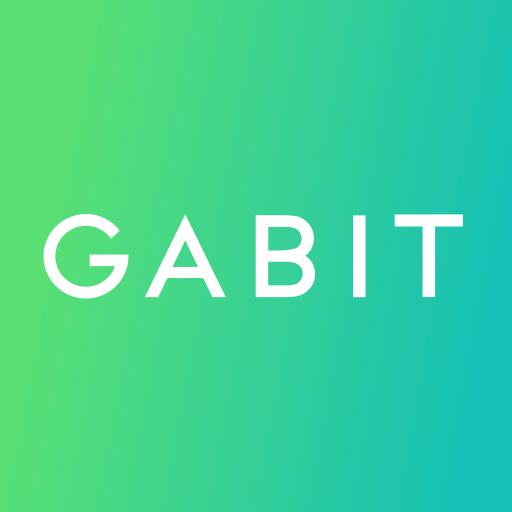
The ultimate guide to building a lean body: Workouts, diet, and tips
Whether you're a seasoned fitness enthusiast or just starting, the quest for a lean body requires dedication, commitment, and the right approach. But fear not, as with the right knowledge and strategies, achieving a lean body mass becomes not only attainable but also immensely rewarding.
Whether your goal is to sculpt defined muscles, boost your metabolism, or simply enhance your overall health and fitness, this guide will equip you with the tools and information you need to succeed. With dedication, consistency, and the guidance provided in this guide, you'll be well on your way to achieving a lean build body.
Understanding lean body mass and its benefits
Before delving into the specifics of achieving lean body mass, it's essential to understand what exactly constitutes lean body mass and why it's crucial for overall health and fitness.
Lean body mass refers to the weight of your body minus the weight of fat. It encompasses muscles, bones, organs, and water, forming the foundation of your body's composition. Unlike fat mass, which primarily serves as a storage mechanism, lean body mass plays a pivotal role in various physiological functions and metabolic processes.
Benefits of lean body mass:
1. Boosted metabolism:
Lean muscle tissue is metabolically active, meaning it burns calories even at rest. By increasing your lean body mass, you can elevate your basal metabolic rate (BMR), leading to more efficient calorie burning and potential weight management benefits.
2. Improved strength and endurance:
Building lean muscle mass enhances your strength and endurance levels, allowing you to perform daily tasks more efficiently and engage in physical activities with greater ease.

3. Enhanced athletic performance:
Athletes and fitness enthusiasts alike benefit from increased lean body mass due to its positive impact on performance. Greater muscle strength and power contribute to improved agility, speed, and overall athletic prowess.
4. Reduced risk of chronic diseases:
Maintaining a healthy level of lean body mass is associated with a lower risk of various chronic conditions, including type 2 diabetes, cardiovascular disease, and osteoporosis.
Lean body diet: Fuelling your body for lean muscle
To gain lean body mass, it's crucial to follow a balanced and nutritious diet that supports muscle growth and recovery. Here's how to fuel your body for lean muscle development:
1. Lean protein sources:
Incorporate lean protein sources such as chicken, turkey, fish, eggs, tofu, and pulses into your meals. These provide the vital amino acids needed for muscle repair and growth.

2. Complex carbohydrates:
Opt for complex carbohydrates such as whole grains, brown rice, quinoa, oats, and sweet potatoes. These carbohydrates provide sustained energy levels and support muscle glycogen stores for optimal performance during workouts.

3. Healthy fats:
Include healthy fats in your diet from sources such as avocados, nuts, seeds, olive oil, and oily fish like salmon. These fats are essential for hormone production, nutrient absorption, and overall health.
4. Fibre-rich foods:
Ensure you're consuming an adequate amount of fibre from fruits, vegetables, beans, and whole grains. Fibre helps in digestion, promotes satiety, and regulates blood sugar levels.

5. Hydration:
It’s important to stay hydrated by drinking plenty of water throughout the day. Aim for at least 8-10 glasses of water daily to support optimal muscle function, nutrient transport, and overall hydration.
6. Limit processed foods:
Minimise your intake of processed foods, sugary snacks, and beverages, as these can contribute to excess calorie consumption and hinder your progress towards a lean body.
Lean body workout plan: Best exercises for building lean muscle
In order to build a lean body, it's vital to incorporate a well-rounded workout plan that targets all major muscle groups. Here are some of the best workouts for lean muscle:
1. Compound movements:
Focus on compound exercises such as deadlifts, bench presses, squats, and rows. These movements engage multiple muscle groups simultaneously, allowing for efficient muscle development and strength gains.

2. Bodyweight exercises:
Incorporate bodyweight exercises such as push-ups, pull-ups, lunges, and dips into your routine. These exercises not only build lean muscle but also improve overall strength and functional fitness.
3. Resistance training:
Utilise resistance training equipment such as dumbbells, barbells, and resistance bands to add intensity to your workouts. Aim for a variety of exercises that target different muscle groups to ensure balanced muscle development.
4. Cardiovascular exercise:
Include cardiovascular exercises such as running, cycling, swimming, or HIIT (High-Intensity Interval Training) to burn excess fat and reveal lean muscle definition. Incorporate both steady-state cardio and interval training for optimal results.

5. Core strengthening:
Don't neglect core exercises such as planks, Russian twists, and bicycle crunches. A strong core not only improves posture and stability but also enhances overall athleticism and performance.
6. Flexibility and mobility work:
Dedicate time to stretching and mobility exercises to improve flexibility, reduce the risk of injury, and enhance muscle recovery. Incorporate dynamic stretches and foam rolling into your routine to keep muscles supple and healthy.
7. Progressive overload:
Gradually increase the intensity of your workouts by slowly training your muscles. This can be achieved by increasing weight, reps, or sets over time to stimulate continuous muscle growth and adaptation.
8. Rest and recovery:
Ensure adequate rest and recovery between workouts to allow muscles to repair and grow. Aim for at least 1-2 days of rest per week and prioritise quality sleep to support optimal muscle recovery and overall health.
Conclusion
Building lean body mass is a multifaceted process that requires a combination of proper nutrition, effective workouts, and consistent effort. Remember that achieving a lean body is not just about aesthetics; it's about improving overall health, strength, and vitality.

Keep in mind that everyone's journey is unique, so listen to your body, adjust your approach as needed, and seek guidance from fitness professionals if necessary. Embrace the challenge, stay focused on your goals, and enjoy the journey towards a healthier, stronger, and more confident you.
Frequently Asked Questions
What is lean body mass, and why is it important?
Lean body mass refers to the weight of your body minus the weight of fat. It includes muscles, bones, organs, and water. It is important because it plays a significant role in boosting metabolism, improving strength and endurance, and enhancing overall athletic performance.
What should I eat to build a lean body?
To build a lean body, focus on consuming lean protein sources such as chicken, fish, tofu, and legumes, along with plenty of fruits, vegetables, and whole grains. Stay hydrated by drinking enough water throughout the day.
What are the best workouts for building lean muscle?
The best workouts for lean muscle include exercises such as squats, bench presses, deadlifts, and rows. Incorporate both strength training and cardiovascular exercises into your routine for optimal results.
How can I build a lean and toned body fast?
Building a lean and toned body requires dedication, consistency, and patience. Focus on following a balanced diet, incorporating both strength training and cardiovascular exercises into your routine, and allowing for adequate rest and recovery between workouts.
How long does it take to build a lean body?
The time it takes to build a lean body varies from person to person, depending on individual factors such as genetics, exercise routine, diet, and consistency. With dedication and commitment, significant progress can be achieved within a few months to a year.
What are the key factors for achieving a lean and muscular body?
The key factors for achieving a lean and muscular body include following a balanced and nutritious diet, engaging in regular exercise that includes both strength training and cardiovascular activities, staying hydrated, getting enough rest and recovery, and staying consistent with your efforts.









